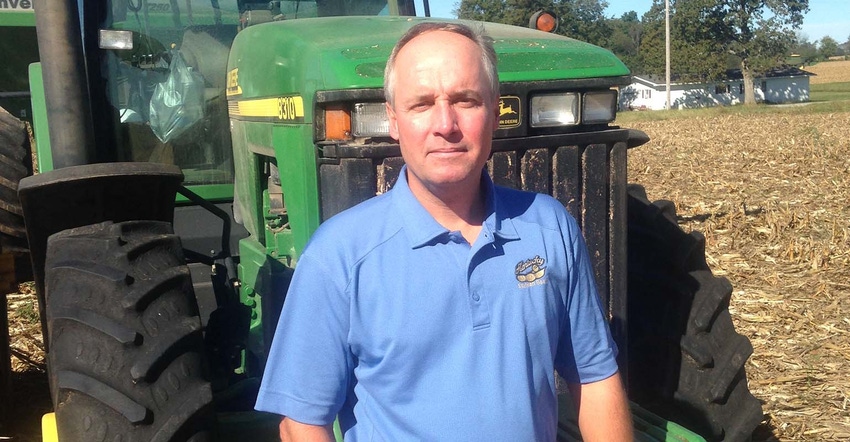
A marketing plan is wonderful if you’re always willing and ready to follow it.
Those words are so easy to write for a desk jockey like me. And so many farmers find that advice very difficult to follow when the market is moving in their favor.
The poet Robert Burns said, the best laid plans of mice and men often go awry, and he surely must have been talking about grain marketing plans.
Then again, sometimes it’s just bad luck, as Kentucky farmer Chris Kummer learned last summer when the corn market began to rally. He had already priced about a third of his corn crop at $4.25 based on margins and average costs of production. “That was a hard target I had picked where I could make a reasonable profit with average yields,” he told me.
Before I go further with this story it’s important to note that Kummer is a really good, business-focused farmer. He’s grown his farm to 3,600 acres with smart decision-making and a close eye on financials. He studies management and marketing information like a preacher studies his Bible.
“We grow a quarter million bushels of corn,” he says. “A ten cent change in that price is a lot of money, so when the market offers you a good price, take it.”
Well, not always
Flash back to mid-June 2016. Kummer was in the middle of wheat harvest. Corn prices hit $4.50 per bu., well above his personal price targets and above his expected profit level, “so I had made a note to myself that morning to sell a significant amount of corn and soybean when I got back in the office,” he recalls.
Then harvest hit a snag. Kummer wound up driving trucks all day and completely forgot about grain sales. The next day prices began plummeting.
“It dropped so quickly I didn’t want to sell, and then it just kept falling,” he says, “and I still own that corn.”
That corn. The disappointment in Kummer’s voice echoes across the Corn Belt, because in grain marketing, misery loves company. Last summer a lot of farmers thought that $4.50 was surely going to $5, maybe more.
“Looking back, there was enough emotion in the market to drive it higher on a drought that might happen but wasn’t yet happening,” he recalls. “That, and good demand, probably caused a 75 cent price increase in the market.”
All that greed and fear happened in less than two weeks.
“I got caught up in the emotion,” he says. “I got mad and hoped it would come back. People see profitable prices but get caught wanting a nickel more; then it drops a nickel and they think, well, it will come back, and many times it doesn’t.”
Another shot
Now farmers like Kummer are just itching for another chance – put me in, coach! Give me another shot! We’re all about second and third chances in the grain markets.
But of course, no one knows if that opportunity will come, or when, or by how much. There’s a lot of uncertainty out there, along with higher costs for early pricing crop insurance options. And maybe lower expectations as supplies weigh down prices despite predictions of fewer corn acres this year.
“One of my price targets for 2017 corn is $4 a bushel,” says Kummer. “The U.S. average cost of production right now, including land, is around $4, so the corn market should gravitate toward that number in spring to get the acres planted.
“Over the next few years we're going to have to figure out how to be happy with the price we get," he adds.
Lessons learned
You can’t always control yield, but you are responsible for pricing your production. And it’s important to learn from past miscues.
What did Kummer learn from 2016?
“Despite 27 years studying marketing, you don’t make good business decisions when you’re mad,” he says. “That emotion will quickly mess up a marketing plan. You just have to pick profitable pricing targets that you can realistically expect to reach, then sell when you reach those targets.
“Making the sale is many times the hardest part.”
What will you do when you get another shot?
The opinions of the author are not necessarily those of Farm Futures or Penton Agriculture.
About the Author(s)
You May Also Like






